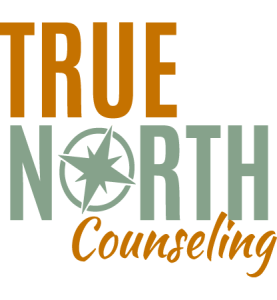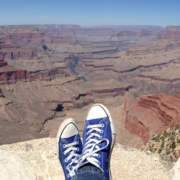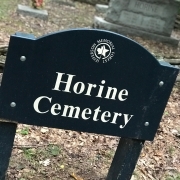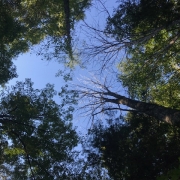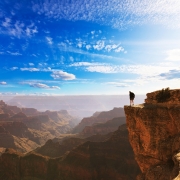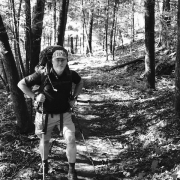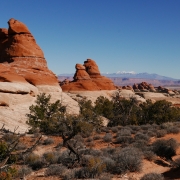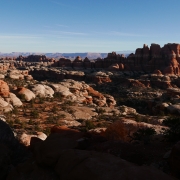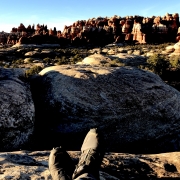The Most Loved and Hated Man in America | Healthy Aging Series: S11 E9
I have a few specific memories of the fifth grade. We lived in Elberfeld, Indiana. My father had purchased horse stables, which he confessed years later, was a big mistake. I have the memory of ending up in the hospital after being trampled by a horse named Valentine. We had a coal furnace, and I remember that you were always blowing coal dust from your nose. I remember hiding under my bed to avoid going to Vacation Bible School, a predictor of things to come in my life.
I remember a talent show. Mrs. Burkhardt loved my boy soprano voice, but it made me feel like a girl, so I’d rather not. I ended up singing a stupid song about using a mop, a chair, and other stuff from the kitchen to make a girl. Embarrassing!
The President’s Physical Fitness Challenge
And then there was the President’s Physical Fitness Challenge. Maybe the reason I remember this Challenge was because I was so proud of myself. Finally, I could do something that I enjoyed and something I was good at. The test included: 1. sit ups, 2. push-ups, 3. sit and reach, 4. A shuttle run, and 5. A 1 mile run/walk.
JFK didn’t begin the fitness test, but he promoted it, and in 1960 wrote an article in Sports Illustrated, “The Soft American.” Here’s what he wrote:
“The findings show that despite our unparalleled standard of living, despite our good food in our many playgrounds, despite emphasis on school athletics, American youths trailed far behind Europeans in physical fitness. Six test for muscular strength and flexibility were given; 57.9% of the American children failed one or more of these test, while only 8.7% of the European youngsters failed.”
He continued, “But the harsh fact of the matter is that there is also an increasingly large number of young Americans, who are neglecting their bodies, who’s physical fitness is not what it should be, who are getting soft. And such softness on the part of individual citizens can help to strip and destroy the vitality of a nation. The physical vigor of our citizens is one of America’s most precious resources. If we waste and neglect this resource, if we allow it to dwindle and grow soft, then we will destroy much of our ability to meet the great and vital challenges which confront our people. We will be unable to realize our full potential as a nation.”
And then he writes, “The television set, the movies, and the varied conveniences and distractions of modern life, all lure our young people away from the strenuous physical activity that is the basis of fitness in youth and in later life.”
John F. Kennedy believed that “luring our young people back to the strenuous life” needed government involvement and government leadership.
The Strenuous President
JFK wasn’t the first president to promote fitness. There was a time when most children lived in rural areas and had chores. There were no screens. OK, we’re talking about the preindustrial times and even before that.
And then people started moving to the cities. I know, I just covered a couple of centuries or more, but there came a time early in the 20th century that people started to take notice, and I think it started with one man. The most loved and hated man in our country’s history, my hero, Teddy Roosevelt.
There are hundreds of biographies on Teddy Roosevelt, but I was drawn to, “The Strenuous Life: Teddy Roosevelt and the Making of the American Athlete,” by Ryan Swanson. By the way, I think it’s interesting that, decades later, JFK spoke about strenuous physical activity as the basis of fitness in his Sports Illustrated essay.
As a young child, Roosevelt struggled with asthma and poor eyesight. Both were debilitating. Listen to what his father told him, “Theodore you have the mind, but you do not have the body.” He challenged him by saying, “Without the help of the body, the mind cannot go as far as it should. You must take care of your body.” And that’s what he did for the next 50 years. He developed a fitness lifestyle. This is why I love Teddy Roosevelt and maybe, partly, why others hated him, although I think the National Park Service system is probably the reason why many people hated him. Some saw converting public land into National Monuments and Parks as a land grab. Regardless, even at 58 he was training for something. Roosevelt set the example for the whole world. Here is what he said,
“Take action, do things; Don’t fritter away your time; create, act, take a place wherever you are and be somebody; take action.”
In the Post Dispatch, a Philadelphia newspaper, they wrote “Theodore Roosevelt, the President of the United States leaped a fence today while 25,000 persons cheered until they could not see straight. It was not so much a fence. A boy could’ve cleared it, but it was the motive behind the act that made the hit with the crowd.” People loved him. He was the Strenuous President. Throughout the country, newspapers in every state used that word over 10,000 times to describe him. It was infectious. They called it strenuosity, no joke. He infected the whole country, even the world with his strenuosity.
Roosevelt created the Strenuous Era. During the first decade of the 20th century, several movements started or were strengthened by his presidency
1. The American League and National Leagues merged and out of this merger came the first World Series.
2. The popularity of football increased, and the NCAA emerged as a growing body to oversee collegiate sports.
3. The United States hosted the Summer Olympics in 1904 in St. Louis.
4. Jack Johnson became America’s first African American Heavyweight Boxing Champion.
5. The Public School’s Athletic League was started in the New York City Public School system and it created the first organized athletic league for American elementary, middle, and high school students.
We take this for granted today, but prior to the early 20th century, children were not given any opportunity to exercise in the school setting.
Intramurals, after-school sports, weekend baseball and basketball programs, the Presidential Fitness Test, all the result of the Strenuous Era, that first decade of the 20th century, which coincided with the presidency of Teddy Roosevelt.
I took some time out from writing the episode to rewatch Ken Burns’ series, “The National Parks: America’s Best Idea.” Teddy Roosevelt signed legislation establishing five National Parks. In 1906, he signed the Antiquities Act enabling presidents to proclaim historic landmarks or prehistoric structures, and other objects of historic or scientific interest, into federal ownership and as National Monuments. At the time, no other country had a National Park. It resulted in protecting one of my favorite places, the Grand Canyon.
As I mentioned earlier, maybe this is the reason that many people hated Teddy Roosevelt. Many believed it was his overreach of government. But I admire the vision that Roosevelt had. He and others took the long view. “A National Park,” Wallace Stegner (one of the others with a long view vision) wrote, “are the best idea we ever had. They reflect us at our best rather than our worst.”
One of the first essays I read by Roosevelt was, “A Cougar Hunt on the Rim of the Grand Canyon.” He had established it a National Monument in 1908. “Leave it as it is,” he said. You cannot improve on it. The ages have been at work on it, and people can only mark it.”
Five years later, he took his two sons hunting in the Canyon. Some people have a difficult time reconciling the image of him as a hunter with the image of him as a conservationist. Not me. He was a complicated man who loved the outdoors. I, for one, love him. He died at age 60, partly from grief, having lost a son in World War I, partly from a gunshot wound from an attempted assassination, and partly due to diseases he contracted on his travels and exploits into the Brazilian Rainforest.
He left his mark.
I believe that Teddy Roosevelt was a Fitness Revolutionary. It’s rare that we have such an example from such a high-ranking individual. Other leaders missed their chance to be Fitness Revolutionaries. There are some that don’t think well of George W. Bush, but he was a very fit and active president. Maybe he missed his chance to make an impact on the fitness of our young people. We each decide what kind of mark we can make.
We are living in a day and age when, despite the opportunities for young people to exercise in and out of school, obesity continues to rise. I certainly think a lot of this has to do with nutrition, but I also think that children spend too much time in front of a screen. When I was in the fifth grade, in Elberfeld, Indiana, all I remember was “ripping and tearing” through the fields in the back part of our property. We had one TV that we all shared. No smart phones. No tablets. I think we were healthier and better for it.
Teddy Roosevelt set in motion The Strenuous Era and maybe it’s time to start a new revolution.
